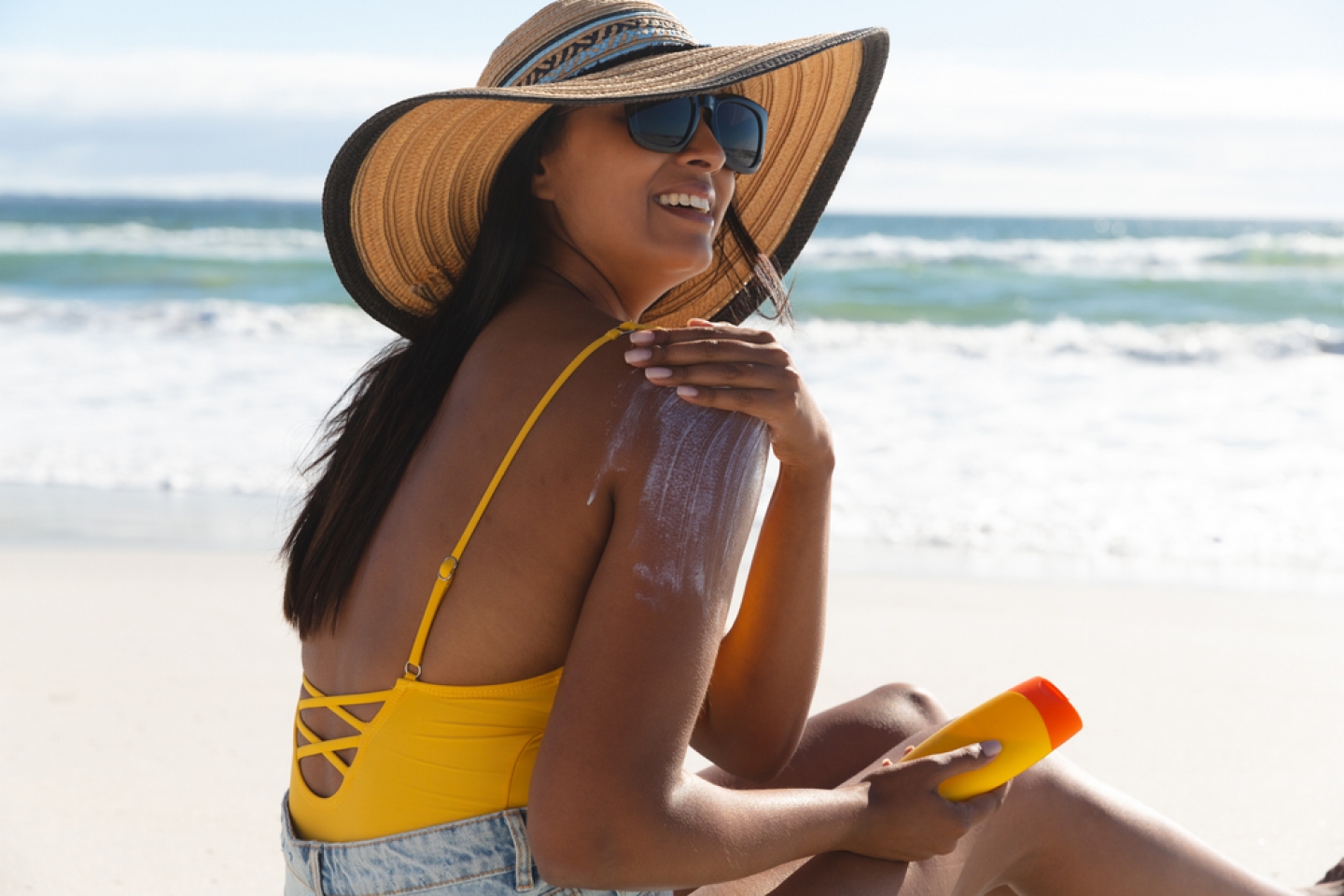
In decades past, a suntan was considered a fashion statement, but that view has long since gone by the wayside. Direct sunlight, especially between the peak hours of 10:00 a.m. and 4:00 p.m., is your skin’s worst enemy, says Dr. Barbara Ma, a medical oncologist and assistant professor of medicine at Weill Cornell Medicine.
“Cancers of the skin are strongly linked to exposure to the sun’s UV (ultraviolet) rays, so practicing sun safety is a must for people with all types of skin,” she says. “There is actually no such thing as a safe tan. Every time you tan or burn, you are damaging the DNA in your skin and increasing your risk of skin cancer. If you want to get the look of a tan, I’d suggest using a spray tan product—but avoid tanning beds at all costs.”
Your skin is your largest organ and the most vulnerable to cancer. One in five Americans will develop skin cancer in their lifetime, with melanoma the deadliest form.
UVB rays can damage the epidermis—the surface layers of your skin—along with specialized skin cells that produce melanin—a pigment that gives color to your hair, skin and eyes. UVA rays penetrate more deeply than UVB rays. Over time, they can lead to sagging and wrinkles. “Think of A for aging and B for burning,” says Dr. Ma. “Exposure to both increases your skin cancer risk.”
Risk factors for skin cancer include UV exposure, tanning bed use, a history of skin cancer and immunosuppression via medications taken to prevent rejection after a transplant or to treat autoimmune disease. Repeated sunburns increase your risk as well. “Even one blistering sunburn during childhood doubles your risk of developing melanoma later in life,” she says. “Skin damage also builds up over time. That is why people who work outdoors are at greater skin cancer risk than those who don’t.”
The sun’s intensity varies by season and geographic location, but even on an overcast day, up to 80 percent of UV rays can penetrate the clouds, Dr. Ma explains. Snow and water reflect UV light as well. For these reasons, it is important to practice sun safety all year round by wearing protective clothing, seeking shade and using sunscreen.
The American Academy of Dermatology recommends using products containing SPF 30 or higher.
It is important to reapply sunscreen every 2 to 3 hours throughout the day. Apply it 30 minutes before going out into the sun to give it time to work. Apply it liberally, including behind your ears and on your neck. And don’t forget to reapply it after a swim or vigorous activity. Water-resistant sunscreen products also are available.
All skin types need protection from UV rays. While fairer skin types tend to be at higher risk for skin cancer, even people with darker skin types can get a painful sunburn. Frequent reapplication is the most important method for preventing UV damage.
The best sunscreen is the one you’ll stick with. There are mineral sunscreens that sit on top of the skin and serve as a physical barrier to the sun’s rays. These often contain zinc oxide or titanium oxide that leave a white layer. There are also chemical sunscreens that protect the skin by absorbing the sun’s rays, but they do not wash off as easily as the mineral variety. Sunscreens also come in spray, gel, cream or stick form.
Some ingredients in chemical sunscreens have been cause for concern: oxybenzone, for example, which may have hormonal properties. However, the data thus far have been inconclusive. As well, there were reports in the media recently about some sunscreens being contaminated with benzene—a carcinogen—and these were recalled out of an abundance of caution.
Still, there is no strong evidence that sunscreen harms our health, and plenty of research supports its effectiveness in preventing skin cancer.
Every child needs sun protection, Dr. Ma says. Use sunscreen for all children over 6 months old. Choose a “baby sunscreen” or a product formulated for sensitive skin. Keep those younger than 6 months out of the sun altogether.
Dr. Ma advises regular self-exams. Look for any of the following:
“Skin cancer is one of the most preventable cancers,” she says. “Practicing sun safety and being vigilant in monitoring changes in your skin will help keep most cancers at bay—even the most dangerous types. In other words, protect the skin you’re in!”
To speak with a provider about your skin care needs, please visit https://weillcornell.org/doctors.